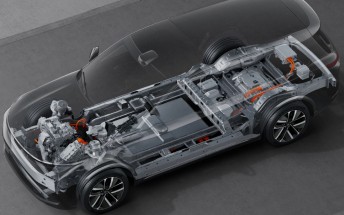Counterclockwise: the history of Siemens phones and their many innovations

I still remember the first time I saw a Siemens ME45 - a black phone with amber lighting and it was water, shock and dust resistant. It was like a stealthy bat-phone.
The ME45 internals are identical to the Siemens S45, the company's first GPRS-capable phone. Both are from 2001. A year later the Siemens S45i came out, it added email support. But we're getting ahead of ourselves.

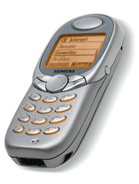

Siemens ME45 • Siemens S45 • Siemens S45i
Siemens' history with telephony dates back to the 19th century when the company got into building telephone exchanges (it was building telegraphs before that). It has been around for as long as Nokia and just like its Finnish counterpart it's no longer in the phone business (HMD notwithstanding). The connection with Nokia is stronger than you may remember, read on.
The first Siemens mobile phone launched in 1985 and pre-dates GSM, though calling the Mobiltelefon C1 "mobile" may be a bit generous. It weighed around 600g (a pound and a half) and worked on an early analog standard. Its first GSM phone was the Siemens S1 from 1994.
Then (in 1998) came the Siemens S10 - the first mobile phone with a color screen. It could display Red, Green, Blue and White colors - not much, but it's better than monochrome. There was also a rugged version, the S10 Active. This is the grand-daddy of the ME45.
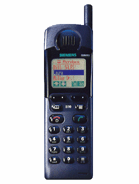

Siemens S10 • Siemens S10 active
The Siemens SL10 from 1999 claims to be the first slider. Last week's article covered Motorola's history, including the first flip phone, which raised a question - what counts as a flip phone? To us, the two halves both need to have active elements (i.e. not just a cover).
We find ourselves in a similar situation now - the original Nokia 8110 dates back to 1996, but it was just a passive cover that did the sliding. The SL10 had a screen on the top half and a keyboard on the bottom half, just like later designs.
Update: As some of you have pointed out, the Nokia 8110 did have an active element on its slider - the microphone. So, the "first slider" title rightfully belongs to it.
The list of firsts continues with the Siemens SL45 - the first mobile phone with expandable memory and the first with an MP3 player. It came bundled with a 32MB MMC card and stereo headphones (that connected over a proprietary port). The SL42 was essentially the same phone, but was cheaper as it came with no headphones and only a 16MB card (up to 1GB cards were supported though).
The Siemens SL45i launched a year later and became the first phone to run Java apps (the hardware was mostly the same). In some ways, the SL45i is the first modern phone - apps (e.g. an e-book reader), music, voice commands, a (WAP) browser are inseparable parts of the modern experience.

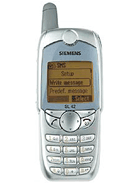
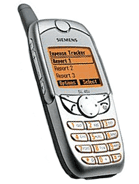
Siemens SL45 • Siemens SL42 • Siemens SL45i
These three phones were based on essentially the same hardware so the SL45i ROM can be flashed on the older models. Actually, something of a modding community formed around the three - they added new graphics, long SMS support and other features. There were bugfixes too (the 45 series was notoriously buggy).
Still, the company's first smartphone came in 2003 - the Siemens SX1. We bring it up quite often due to its kooky keypad arrangement. Users could play the Typegun game to get familiar with the keypad.
Mozzies, another pre-loaded game, won the Best Mobile Game 2003 award. It was a motion controlled Augmented Reality game that showed mosquitoes on the VGA camera's viewfinder and you had to shoot them down. The phone didn't have an accelerometer so instead the image from the camera was tracked to detect motion (imagine doing that on a 120MHz CPU).
Two more things about this phone that we want to bring up: the SX1 McLaren edition was beautiful and there was a Linux port for the SX1. Siemens phones have a history of being mod-friendly.


Siemens SX1 • Siemens SX1 McLaren edition
A year before the SX1 the camera situation was different. The first Siemens that can shoot photos was the S55 even though it didn't have an on-board camera. Instead you could plug an external one - the QuickPic IQP-500. You couldn't use the tiny 256 color screen as a viewfinder, instead there was an optical one on the camera module itself. This was just like the Sony Ericsson T68i from the same year.
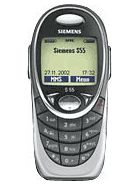

Siemens S55 • QuickPic IQP-500 camera add-on for the Siemens S55
The Siemens U10 from 2003 was among the first phones that could shoot selfies, though it didn't have a selfie camera. It had a single VGA camera that could be rotated to point forwards or backwards. This was exactly 10 years before the Oppo N1. Anyway, the Siemens U15 (also from 2003) did have two cameras. These two are also the first two Siemens phones to have 3G connectivity, though they were actually developed by Motorola.
The Siemens SXG75 - the last phone to be launched by the company independently - was its first in-house 3G phone. It was also its first with a built-in GPS receiver. And it was a smartphone capable of multitasking thanks to the Brew operating system.
It came out in 2005, the same year that Siemens sold its struggling phone division to BenQ and licensed its name for phones for five years (which company does this remind you of?). BenQ, a Taiwanese company, would build BenQ-Siemens phones at its German unit (which filed for bankruptcy in 2006).
2006 wasn't all bad, however, it's when the network divisions of Nokia and Siemens banded together. In 2011 the joint company acquired Motorola's wireless network division and in 2013 Nokia bought out Siemens' share in the company.
Siemens isn't completely out of the game - Gigaset emerged from it and it does offer a number of Android smartphones. It's at best a bit player and it avoids the "Siemens" brand.
This is almost the end of our story, but we have one more interesting twist - a Euro-Japanese partnership that isn't Sony Ericsson. Fujitsu Siemens would release just one mobile device - the T810 (the T830 was the same, save for the addition of a camera) - so it's little more than a footnote in history.
Curiously, Fujitsu Siemens was formed by the acquisition of International Computers Limited, which had earlier bought the PC divisions of Nokia and Ericsson.
Siemens is a forgotten name in mobile phones now, but it was in the thick of it for 20 years. And we're sad that it's gone, it brought us so many wonderful firsts.
Related
Reader comments
- AnonD-1046572
- 16 Apr 2022
- nxg
I have a Siemens A55 which can't be used as it is locked and I have been told by many people that it can't be unlocked as the code can't be found. You are clearly aware of he convoluted history of this company and I would guess that t...
- bill lee
- 13 Jan 2020
- HjA
ME45 basically can receive fax, that's something you don't see nowadays.
- Anonymous
- 08 Apr 2019
- MCM
In case that Nokia 8110 really had an active slider just because of the microphone, that should be active also for Sony CMD-X1000, which is internally Siemens S4 with a slightly different housing. So Siemens was still the first, just with the Sony lo...
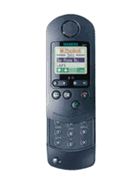
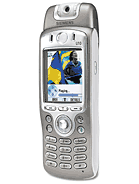

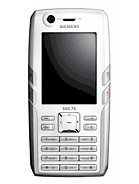
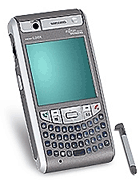








 Samsung
Samsung Xiaomi
Xiaomi Sony
Sony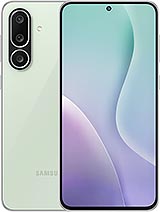 Samsung
Samsung Samsung
Samsung

